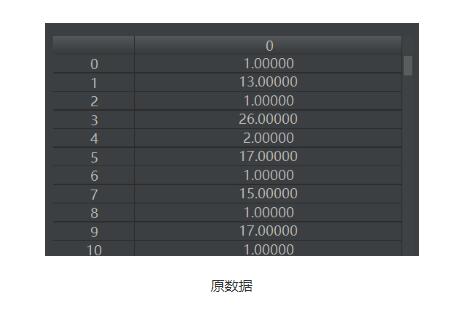python 提取html文本的方法
假設(shè)我們需要從各種網(wǎng)頁(yè)中提取全文,并且要?jiǎng)冸x所有HTML標(biāo)記。通常,默認(rèn)解決方案是使用BeautifulSoup軟件包中的get_text方法,該方法內(nèi)部使用lxml。這是一個(gè)經(jīng)過(guò)充分測(cè)試的解決方案,但是在處理成千上萬(wàn)個(gè)HTML文檔時(shí)可能會(huì)非常慢。通過(guò)用selectolax替換BeautifulSoup,您幾乎可以免費(fèi)獲得5-30倍的加速!這是一個(gè)簡(jiǎn)單的基準(zhǔn)測(cè)試,可分析commoncrawl(`處理NLP問(wèn)題時(shí),有時(shí)您需要獲得大量的文本集。互聯(lián)網(wǎng)是文本的最大來(lái)源,但是不幸的是,從任意HTML頁(yè)面提取文本是一項(xiàng)艱巨而痛苦的任務(wù)。假設(shè)我們需要從各種網(wǎng)頁(yè)中提取全文,并且要?jiǎng)冸x所有HTML標(biāo)記。通常,默認(rèn)解決方案是使用BeautifulSoup軟件包中的get_text方法,該方法內(nèi)部使用lxml。這是一個(gè)經(jīng)過(guò)充分測(cè)試的解決方案,但是在處理成千上萬(wàn)個(gè)HTML文檔時(shí)可能會(huì)非常慢。通過(guò)用selectolax替換BeautifulSoup,您幾乎可以免費(fèi)獲得5-30倍的加速!這是一個(gè)簡(jiǎn)單的基準(zhǔn)測(cè)試,可分析commoncrawl(https://commoncrawl.org/)的10,000個(gè)HTML頁(yè)面:
# coding: utf-8from time import timeimport warcfrom bs4 import BeautifulSoupfrom selectolax.parser import HTMLParserdef get_text_bs(html): tree = BeautifulSoup(html, ’lxml’) body = tree.body if body is None:return None for tag in body.select(’script’):tag.decompose() for tag in body.select(’style’):tag.decompose() text = body.get_text(separator=’n’) return textdef get_text_selectolax(html): tree = HTMLParser(html) if tree.body is None:return None for tag in tree.css(’script’):tag.decompose() for tag in tree.css(’style’):tag.decompose() text = tree.body.text(separator=’n’) return textdef read_doc(record, parser=get_text_selectolax): url = record.url text = None if url:payload = record.payload.read()header, html = payload.split(b’rnrn’, maxsplit=1)html = html.strip()if len(html) > 0: text = parser(html) return url, textdef process_warc(file_name, parser, limit=10000): warc_file = warc.open(file_name, ’rb’) t0 = time() n_documents = 0 for i, record in enumerate(warc_file):url, doc = read_doc(record, parser)if not doc or not url: continuen_documents += 1if i > limit: break warc_file.close() print(’Parser: %s’ % parser.__name__) print(’Parsing took %s seconds and produced %s documentsn’ % (time() - t0, n_documents))
>>> ! wget https://commoncrawl.s3.amazonaws.com/crawl-data/CC-MAIN-2018-05/segments/1516084886237.6/warc/CC-MAIN-20180116070444-20180116090444-00000.warc.gz>>> file_name = 'CC-MAIN-20180116070444-20180116090444-00000.warc.gz'>>> process_warc(file_name, get_text_selectolax, 10000)Parser: get_text_selectolaxParsing took 16.170367002487183 seconds and produced 3317 documents>>> process_warc(file_name, get_text_bs, 10000)Parser: get_text_bsParsing took 432.6902508735657 seconds and produced 3283 documents
顯然,這并不是對(duì)某些事物進(jìn)行基準(zhǔn)測(cè)試的最佳方法,但是它提供了一個(gè)想法,即selectolax有時(shí)比lxml快30倍。selectolax最適合將HTML剝離為純文本。如果我有10,000多個(gè)HTML片段,需要將它們作為純文本索引到Elasticsearch中。(Elasticsearch有一個(gè)html_strip文本過(guò)濾器,但這不是我想要/不需要在此上下文中使用的過(guò)濾器)。事實(shí)證明,以這種規(guī)模將HTML剝離為純文本實(shí)際上是非常低效的。那么,最有效的方法是什么?
PyQueryfrom pyquery import PyQuery as pqtext = pq(html).text() selectolax
from selectolax.parser import HTMLParsertext = HTMLParser(html).text() 正則表達(dá)式
import reregex = re.compile(r’<.*?>’)text = clean_regex.sub(’’, html)結(jié)果
我編寫(xiě)了一個(gè)腳本來(lái)計(jì)算時(shí)間,該腳本遍歷包含HTML片段的10,000個(gè)文件。注意!這些片段不是完整的<html>文檔(帶有<head>和<body>等),只是HTML的一小部分。平均大小為10,314字節(jié)(中位數(shù)為5138字節(jié))。結(jié)果如下:
pyquery SUM: 18.61 seconds MEAN: 1.8633 ms MEDIAN: 1.0554 msselectolax SUM: 3.08 seconds MEAN: 0.3149 ms MEDIAN: 0.1621 msregex SUM: 1.64 seconds MEAN: 0.1613 ms MEDIAN: 0.0881 ms
我已經(jīng)運(yùn)行了很多次,結(jié)果非常穩(wěn)定。重點(diǎn)是:selectolax比PyQuery快7倍。
正則表達(dá)式好用?真的嗎?對(duì)于最基本的HTML Blob,它可能工作得很好。實(shí)際上,如果HTML是<p> Foo&amp; Bar </ p>,我希望純文本轉(zhuǎn)換應(yīng)該是Foo&Bar,而不是Foo&amp; bar。更重要的一點(diǎn)是,PyQuery和selectolax支持非常特定但對(duì)我的用例很重要的內(nèi)容。在繼續(xù)之前,我需要?jiǎng)h除某些標(biāo)簽(及其內(nèi)容)。例如:
<h4 class='warning'>This should get stripped.</h4><p>Please keep.</p><div style='display: none'>This should also get stripped.</div>
正則表達(dá)式永遠(yuǎn)無(wú)法做到這一點(diǎn)。
2.0 版本因此,我的要求可能會(huì)發(fā)生變化,但基本上,我想刪除某些標(biāo)簽。例如:<div class =“ warning”> 、 <div class =“ hidden”> 和 <div style =“ display:none”>。因此,讓我們實(shí)現(xiàn)一下:
PyQueryfrom pyquery import PyQuery as pq_display_none_regex = re.compile(r’display:s*none’)doc = pq(html)doc.remove(’div.warning, div.hidden’)for div in doc(’div[style]’).items(): style_value = div.attr(’style’) if _display_none_regex.search(style_value):div.remove()text = doc.text() selectolax
from selectolax.parser import HTMLParser_display_none_regex = re.compile(r’display:s*none’)tree = HTMLParser(html)for tag in tree.css(’div.warning, div.hidden’): tag.decompose()for tag in tree.css(’div[style]’): style_value = tag.attributes[’style’] if style_value and _display_none_regex.search(style_value):tag.decompose()text = tree.body.text()
這實(shí)際上有效。當(dāng)我現(xiàn)在為10,000個(gè)片段運(yùn)行相同的基準(zhǔn)時(shí),新結(jié)果如下:
pyquery SUM: 21.70 seconds MEAN: 2.1701 ms MEDIAN: 1.3989 msselectolax SUM: 3.59 seconds MEAN: 0.3589 ms MEDIAN: 0.2184 msregex Skip
同樣,selectolax擊敗PyQuery約6倍。
結(jié)論正則表達(dá)式速度快,但功能弱。selectolax的效率令人印象深刻。
以上就是python 提取html文本的方法的詳細(xì)內(nèi)容,更多關(guān)于python 提取html文本的資料請(qǐng)關(guān)注好吧啦網(wǎng)其它相關(guān)文章!
相關(guān)文章:
1. python實(shí)現(xiàn)讀取類別頻數(shù)數(shù)據(jù)畫(huà)水平條形圖案例2. Java 基于UDP協(xié)議實(shí)現(xiàn)消息發(fā)送3. python 如何停止一個(gè)死循環(huán)的線程4. ASP.NET MVC前臺(tái)動(dòng)態(tài)添加文本框并在后臺(tái)使用FormCollection接收值5. php5.6不能擴(kuò)展redis.so的解決方法6. PHP獲取時(shí)間戳等相關(guān)函數(shù)匯總7. 關(guān)于HTML5的img標(biāo)簽8. Python編寫(xiě)nmap掃描工具9. python 爬取嗶哩嗶哩up主信息和投稿視頻10. 如何基于python3和Vue實(shí)現(xiàn)AES數(shù)據(jù)加密

 網(wǎng)公網(wǎng)安備
網(wǎng)公網(wǎng)安備